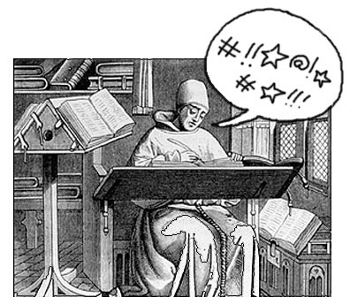 No piece of writing is complete without submitting it to the scrutiny of revision. A colleague of mine once shared the story of what a student of hers had said about revision: it’s “like beating up a nice friend. Why would I want to do that?” Because, my colleague replied, without a little pummeling all you have is a “nice draft”.
No piece of writing is complete without submitting it to the scrutiny of revision. A colleague of mine once shared the story of what a student of hers had said about revision: it’s “like beating up a nice friend. Why would I want to do that?” Because, my colleague replied, without a little pummeling all you have is a “nice draft”.
Here are ten things you can do to revise your first and subsequent drafts into something stellar.
1. Let Your Work Breathe
Once you’ve completed your draft, set it aside for a while. This is key to helping you make objective observations about your writing when you return. The longer you leave it, the more objective you will be. Don’t worry about losing momentum or interest; they most certainly will return. But if hey don’t, then you didn’t have a story in the first place—and that, too, is a good thing to discover.
2. Dig Deep
Now that you have the whole story in front of you, you’re in the position to restructure plotlines, subplots, events and characters to best reflect your overall story and its main theme. Don’t be afraid to remove large sections or even whole characters; you will likely add others.
3. Take Inventory
Take stock of how each chapter and scene/sequel contributes to plotline and theme; root out the inconsistencies as you relate the minutia to the whole. You may decide to merge two characters into one or add a character or change a character’s gender or age to better serve your plotline and theme.
4. Highlight the Surges
Some passages will stand out as being particularly stunning; pay attention to them in each chapter and apply their energy to the rest of your writing.
5. Purge & Un-clutter
Make a point of shortening everything; this forces you to use more succinct language and replace adjectives and adverbs with power-verbs. Doing this will tighten prose and make it more clear. Reading aloud, particularly dialogue, can help streamline your prose.
6. Check Point of View
This is the time to take stock of whether you’ve chosen the best point of view style for your story (e.g., first person, third person limited, omniscient). Many first manuscripts by my students have suffered from shifting or inconsistent point of view. Ensure that yours is consistent. You may wish to experiment with different points of view at this stage (e.g., changing your narrative from the third person to the first person, for instance); the results may surprise you.
7. Make a Plot Promise
Given that you are essentially making a promise to your readers, it is advisable that you revisit that promise. Tie up your plot points; don’t leave any hanging unless you’re intentionally doing this. But, be aware that readers don’t generally like it. Similarly, if you’ve written a scene that is lyrical, beautiful and compelling but doesn’t contribute to your plotline, nix it. You can file it away for another story where it may be more applicable.
8. Deepen Your Characters
The revision process is an ideal time to add subtle detail to your main characters: a nervous scratch of his beard, an absent twisting of the ring on her finger, the frequent use of a particular expression. Purposefully adding unique qualities to your characters, like vernacular, body language, and inflections grounds them in reality and makes them more personable and memorable. However, if you want a particular character trait to stick with the reader, you should repeat it a few times throughout the story. This applies to minor characters as well. When you paint your minor characters with more detail, you create a more three-dimensional tapestry for your main characters to walk through.
9. Write Scenes (show, don’t tell)
Use the revision process to convert flat narrative into “scene” through dramatization. Narrative summaries often read like lecture or polemic. They tend to be passive, slow, and less engaging. Scenes are animated by action, tension and conflict, dialogue and physical movement.
10. Be Concrete
Ground your characters in vivid setting and rich but unobtrusive detail. Don’t abandon them to a generic and prosaic setting, drinking “beverages” and driving “vehicles” on “roads”; instead brighten up their lives by having them speeding along Highway 66 in a red Carmen Ghia while sipping a Pinot Noir.
Remember to pace yourself when revising; otherwise you may become overwhelmed and discouraged, even confused into incessant rewrites. Your story needs to settle between revision stages. As my colleague said, “you don’t need to beat up your nice friend all at once.”










Recent Comments